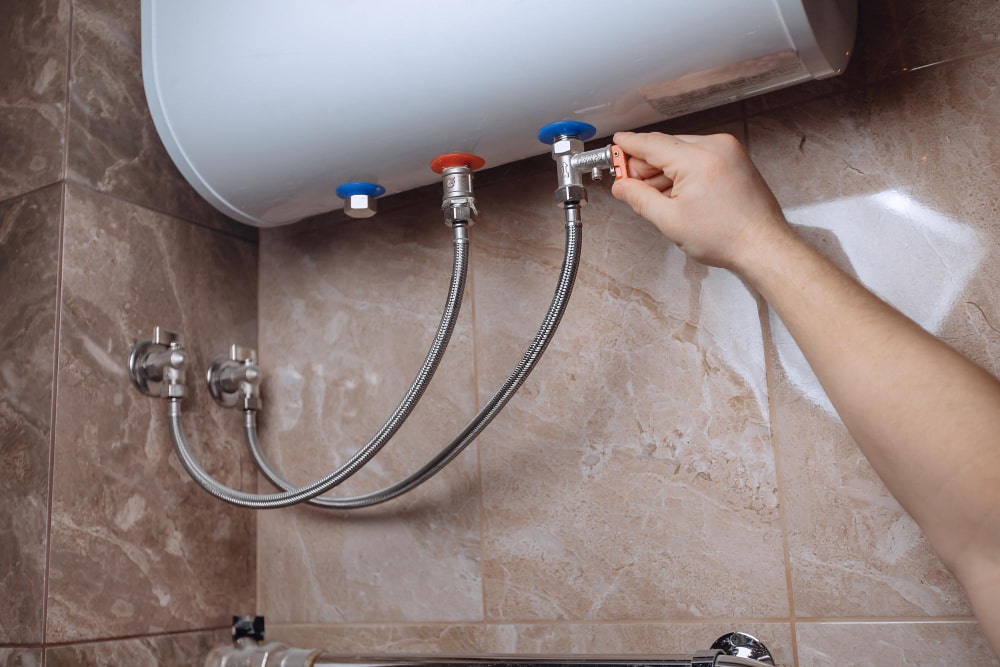What are your beliefs on How to Maintain Your Water Heater & Prolong its Life?

Hot water is vital for everyday comfort, whether it's for a revitalizing shower or cleaning meals. To ensure your warm water system runs effectively and lasts longer, regular upkeep is vital. This write-up provides sensible pointers and insights on how to keep your home's warm water system to prevent disruptions and costly repairs.
Intro
Maintaining your home's hot water system might seem difficult, yet with a few straightforward steps, you can ensure it runs efficiently for several years to come. This guide covers whatever from recognizing your warm water system to DIY maintenance pointers and recognizing when to hire expert assistance.
Relevance of Preserving Your Warm Water System
Normal upkeep not only expands the life expectancy of your warm water system yet likewise ensures it runs successfully. Neglecting maintenance can cause reduced efficiency, greater energy bills, and even early failing of the system.
Indicators Your Warm Water System Needs Upkeep
Recognizing when your warm water system requires attention can prevent major concerns. Watch out for indicators such as irregular water temperature, strange noises from the heating system, or rusty water.
Comprehending Your Hot Water System
Prior to diving into upkeep tasks, it's useful to recognize the basic elements of your hot water system. Commonly, this includes the hot water heater itself, pipelines, anode rods, and temperature controls.
Month-to-month Maintenance Tasks
Routine month-to-month checks can help catch small concerns before they intensify.
Purging the Hot Water Heater
Flushing your water heater eliminates debris build-up, improving efficiency and extending its life.
Monitoring and Changing Anode Rods
Anode poles prevent corrosion inside the storage tank. Checking and changing them when worn is critical.
Inspecting and Changing Temperature Level Setups
Readjusting the temperature settings guarantees ideal performance and security.
Do It Yourself Tips for Upkeep
You can execute numerous upkeep jobs on your own to maintain your warm water system in leading condition.
Looking for Leakages
Consistently inspect pipes and links for leakages, as these can bring about water damages and higher expenses.
Checking Pressure Relief Valves
Evaluating the pressure relief valve ensures it functions correctly and avoids excessive pressure accumulation.
Protecting Pipes
Insulating hot water pipelines decreases heat loss and can save power.
When to Call a Specialist
While do it yourself upkeep is helpful, some problems need professional competence.
Facility Issues Calling For Specialist Help
Examples consist of major leakages, electrical troubles, or if your hot water heater is constantly underperforming.
Routine Professional Upkeep Perks
Professional upkeep can consist of comprehensive evaluations, tune-ups, and ensuring compliance with safety criteria.
Conclusion
Routine maintenance of your home's hot water system is crucial for performance, longevity, and expense savings. By complying with these tips and knowing when to look for specialist assistance, you can guarantee a reputable supply of hot water without unforeseen disturbances.
Water Heater Maintenance Tips
Test the TPR Valve
Shut off the power and the cold-water supply valve. Place a bucket under the pipe connected to the temperature-pressure-release (TPR) valve on the top or side of the tank. (This valve opens if the tank pressure gets too high.) Lift the valve’s tab to let some water out, then let go. If water keeps flowing, drain the tank partway, unscrew the old valve with a pipe wrench, and install a new one. Check the Anode Rod
Put a hose to the tank’s drain cock and let out a few gallons of water. Now fit a 1 1/16-inch socket onto the rod’s hex head on top of the heater (or under its top plate) and unscrew the rod. If it’s less than ½ inch thick or coated with calcium, buy a new one, wrap its threads with Teflon tape, put it back in the tank, and tighten securely. Use this segmented rod if headroom above the tank is limited. Drain the Tank and Wash Out Sediment
Drain the remaining water in the tank into the bucket, then stir up the sediment on the tank’s bottom by briefly opening the cold-water supply valve. Drain and repeat until clean water comes out of the hose. Close the drain cock, refill the tank, and turn its power back on. Adjust the Temperature
Find the temperature dial on the side of the tank and unscrew its cover. Adjust the dial to 120 degrees using a flathead screwdriver. For every 10 degrees the temperature is lowered, you can expect to save up to 5 percent in energy costs. Turn the water heater off or the thermostat down to its lowest setting if you plan to be away from home for more than three days. Insulate the Pipes
Buy some self-sticking 3/8-inch-thick foam pipe insulation that matches the pipes’ diameter. Slide the foam over the hot-and cold-water pipes as far as you can reach. Insulating the cold-water pipe prevents condensation in summer. Peel the tape and squeeze the insulation closed. If the pipe is 6 inches or less from the flue, cover it with 1-inch-thick unfaced fiberglass pipe wrap. https://www.thisoldhouse.com/plumbing/21016402/how-to-maintain-a-water-heater

I'm very fascinated by How to Maintain Your Water Heater & Prolong its Life and I'm hoping you enjoyed reading the entire page. Are you aware of another person who is serious about the subject? Take a moment to promote it. We value reading our article about What Kind of Maintenance Do Water Heaters Need?.
Book Service Now